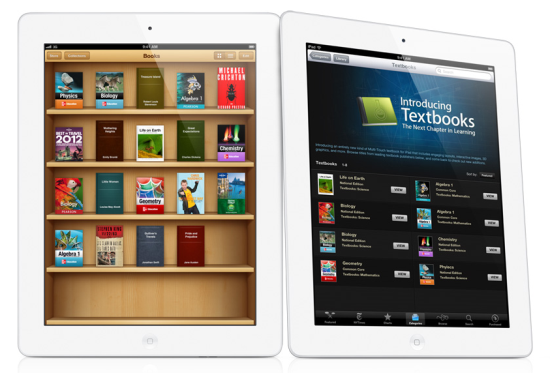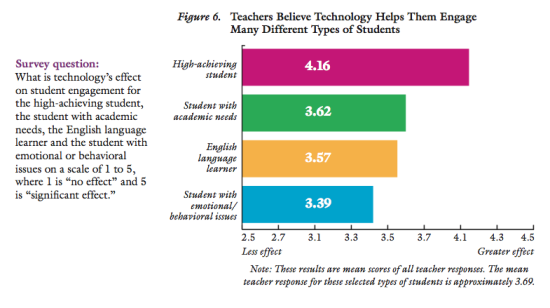
Apple's education event, held last week, brought on new possibilities for teachers and students. Replacing paper textbooks with digital copies on an iPad has deep implications for the education system in this country and around the entire globe. The benefits are obvious. However, there are several factors that are not so obvious. Apple's event left us with more unanswered questions than solid solutions.
Technology in education is certainly not a new topic, but it's also not one without controversy. Logistics that haven't even been worked out with core technologies like laptops and wireless internet are destined to be a problem for Apple's new venture. There are realities that must be either accepted or changed. Will these realities get in the way of the digital textbook? Is the idea of an iPad in the hands of every single student simply a pipe dream? What has research shown in this area? The answers to these questions are crucial to the future of education.
Money is the first thing that comes to mind when talking about potential roadblocks. It's great that each digital textbook will only cost $15, but the iPad itself still retails for at least $500. Even if schools were given a steep discount on each tablet and obtained each one for only $100, that's still more than the average paper textbook that costs $75 (not to mention the fact that it is highly unlikely that each iPad will cost only $100). Not only that, but each digital textbook is assigned to one student and cannot be "reused". Therefore, over a five year period, the school will end up paying the same amount for a digital textbook as it would for a paper textbook, $75.
If a grant cannot be obtained by a school in order to get the iPads and it is up to each school or the parents of each student to pay for the tablet, then it would only stand to reason that students in affluent areas would be the majority of the ones who will benefit from this opportunity, thus further widening the disparity between low-income schools and those in more well-to-do neighborhoods.
While using an iPad as a textbook seems attractive, anyone who owns a tablet will tell you how uncomfortable reading on one for extended periods of time can be. An LCD panel was simply not made for extensive reading. Not only would this be dangerous to students' vision, but it will become bothersome over time.
I also worry about regulation. The appeal of the iPad is that it can do so much - gaming, web browsing, social networking, and more. What's to keep a student from using his assigned iPad for that instead of studying? Certain security measures could be put in place as is done with computers in schools, but would it be that easy to explain the purchase of a $500 device when it will be used for only one of its designated purposes?
There are logistical questions that must be answered. Perhaps it will be up to each school to figure out the answers. Perhaps Apple has further details that have simply not been revealed yet. Regardless, an iPad in the hands of every student is not something we should expect to see in the next few months.
Several studies have been done on the impact of technology in education. In recent years, more schools and universities are conducting their own research projects that involve the use of tablets in their curriculum. The problem with these studies and test runs is that they are short-term projects that hardly provide the kind of in-depth statistics that are needed to fully understand the results. Long-term studies either haven't been done or are no longer relevant due to the continually changing nature of modern technology. Another issue is that some studies are funded by the very companies that sell or develop this technology. For example, the day after Apple held its education event, textbook publishers Houghton Mifflin Harcourt released a study using an iPad in an Algebra 1 course that found that 20 percent more students scored high marks on a state test when using the tablet over a paper textbook. Well, since Houghton Mifflin Harcourt is one of the publishing firms that Apple is partnering with to provide digital textbooks, the validity or objectivity of such a test is rightfully questioned.
However, despite these limitations, most studies show that technology in education is beneficial, though the measure of benefit is not clear. As an example, a survey of 500 educators by CompTIA revealed that 78 percent believe that technology has a positive impact on education and 65 percent said students are more productive today than they were three years ago because of technology in the classroom.

(Source: Grunwald and Associates. (2010). Educators, technology and 21st century skills: Dispelling five myths. Retrieved from Walden University, Richard W. Riley College of Education)
On the other hand, a study commissioned by Walden University found that teachers who frequently used technology did not see much improvement in areas such as completing homework thoroughly, analyzing information, and communicating thoughts effectively in written form, though they did feel it helped them engage the student. A study done by researchers at Abilene Christian University had similar results. According to the report, "a student who did not study in a traditional classroom could not study in a mobile classroom."
Of course, these results are subject to several variables. The "technology" referred to in each study was not necessarily digital textbooks. When the use of digital textbooks was the subject of studies, such as was the case in a study by researchers at the University of California, the device being used was not an iPad, but rather, a Kindle DX. It was the limitations of the Kindle - the lack of the ability to highlight, take notes, and easily navigate through the book - that caused a high percentage of students (49%) to prefer print books over e-books. Indeed, seven months into the study, less than 40% were still using the Kindle DX in their studies. However, when Reed College, another institution that performed a pilot test with the Kindle DX and experienced similar results, began using the iPad as an educational tool, the students were much more pleased. Says CTO Martin Ringle, 'where the Kindle failed, the Apple iPad excelled.'
It is interesting to note the prevalence of technology in other training situations outside of schools and college campuses. In a study by researchers at MIT, it is noted that "nearly all institutions – business, industry, medicine, science and government – have harnessed aspects of these technologies for decades. Games and simulations have been a key component of training doctors and military personnel…[T]he fact is major corporations, the Department of Defense, and the medical community would not use these tools if they were not highly effective."
Digital textbooks can offer obvious and immediate benefits. They're interactive, exciting, portable, and current. Technology is an amazing thing and to not use its power in the classroom would be doing students a disservice. But how far should our reliance on technology go? At the end of the day, school is still school. It still starts early in the morning, students still have to listen, study, and do homework, and teachers are still the primary teaching tool. As Kristen House, a former instructor at Belmont University, brings out, "A great teacher can do more for a student than any amount of money or technology you can throw at it." The technology is only as good as the teachers that are using it.
Technology in education is the future, but it is not the solution to all of the problems facing educators today. The benefits are obvious but the methods are not. Textbooks with iBooks is a great start, but we must continue to develop new technologies that are cheaper and better suited for this specific purpose.